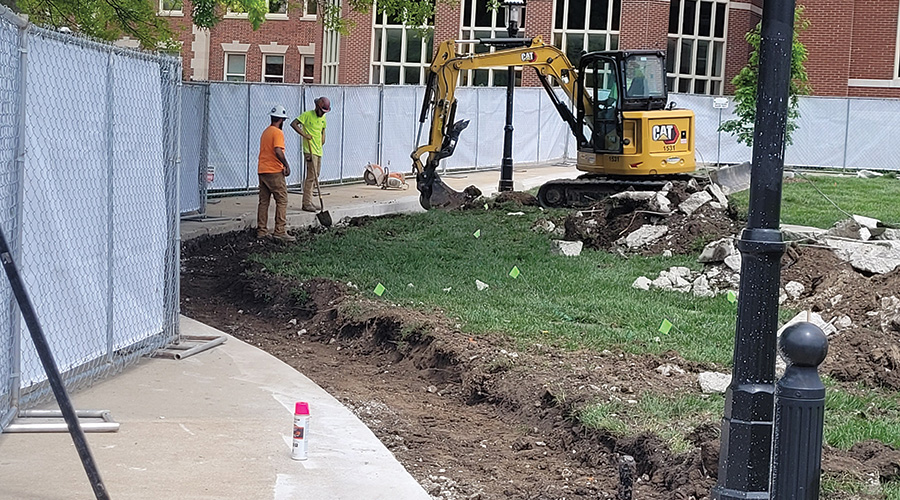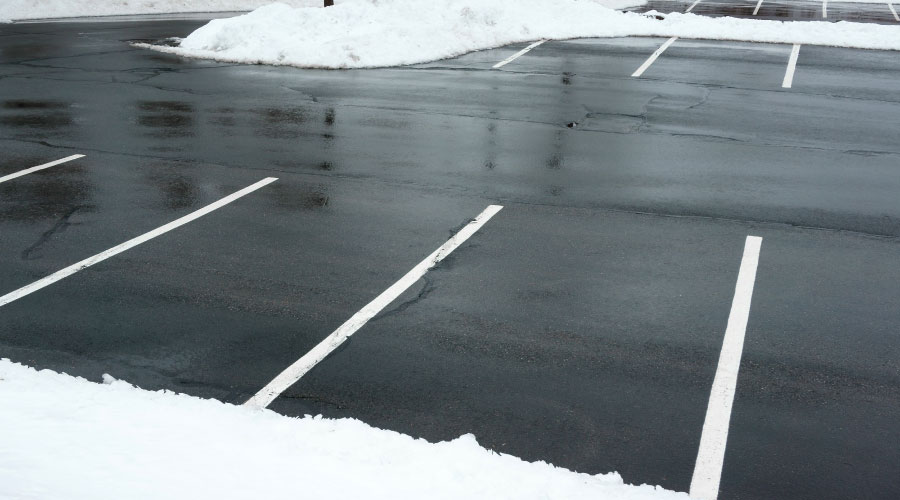Snow and Ice Removal: Trucks, Plows and Spreaders
As with other tasks, equipment for removing snow and ice depends on the job. But grounds managers must specify a range of products and equipment to make sure crews have the tools to handle any task. Equipment options include:
Pickup trucks. Pickups serve as general utility vehicles for shovel or deicing crews, and workers can use attachments to turn them into plows. But plowing is very hard on equipment, and it might increase the need for maintenance, repairs and maybe even equipment replacement.
Snowplows. Snowplows are an obvious need for any grounds crew, but it is surprising how many options managers must consider. When considering a pickup truck, managers can specify straight blades, which can be more cost effective initially but have limited maneuverability and control. V-plows might be a better investment over time, but they generally are more expensive initially than straight plows. They provide more versatility and can more effectively adapt to changing conditions.
Innovative containment plows, also known as box plows, can allow crews to remove large amounts of snow and ice efficiently. These bulk-pushers are not designed for tight spaces or clean-up work but generally provide a higher return on investment.
Spreaders. The best advice when specifying a spreader is to understand the department’s objectives for managing a location and buying equipment to meet those demands.
Tailgate spreaders offer a smaller, more cost-effective option. These plastic or poly-body spreaders hook onto the back of a pickup or other piece of equipment, and workers control them from the cab.
For a larger site, V-box spreaders might be a more effective solution. V-box spreaders offer more control and salt storage — meaning fewer refill trips — which helps save time and money during critical storm hours. Workers must be careful when tying down the V-box spreaders because they add significant weight to a vehicle, especially when they contain salt.
Skid-steer loaders. These units are becoming a must for many departments because they tend to be tougher and more maneuverable than pickup trucks. They are useful in tight spaces, such as parking lots with cars, and workers can use them in conjunction with a containment plow.
Utility vehicles. Several manufacturers have come out with utility vehicles designed to work in different applications and seasons. These are strong snow and ice management tools because manufacturers have rolled out many attachments for plowing and deicing.
Front-end loaders and tractors. Depart-ments typically use these pieces of equipment with a large plow or box plow for bigger jobs. They require coordination with smaller pieces of equipment, such as a pickup truck, for cleanup in tight areas.
Related Topics:















